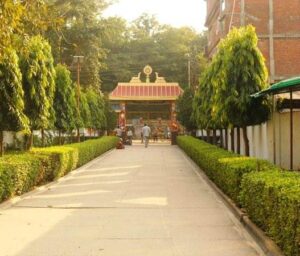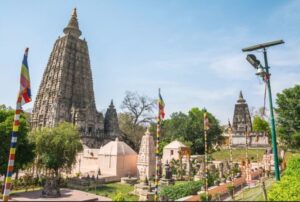
Bodh Gaya is the most holy place for Buddhists Situated by the bank of the river Neranjana, the place was then known as Uruwela. King Ashoka was the first king to build a temple here
Bodh Gaya is a religious site and place of pilgrimage associated with the Mahabodhi temple Complex in Gaya district in the Indian state of Bihar. It is famous as it is the place where Gautama Buddha is said to have obtained Enlightenment (Pali: bodhi) under what became known as the Bodhi Tree. Since antiquity, Bodh Gaya has remained the object of pilgrimage and veneration for both Hindus and Buddhists.
For Buddhists, Bodh Gaya is the most important of the main four pilgrimage sites related to the life of Gautama Buddha, the other three being Kushinagar, Lumbini, and Sarnath. In 2002, the Mahabodhi temple, located in Bodh Gaya, became a UNESCO World Heritage Site. The disciples of Gautama Siddhartha began to visit the place during the full moon in the month of Vaisakh (April–May), as per the Hindu calendar. Over time, the place became known as Bodh Gaya, the day of enlightenment as Buddha Purnima, and the tree as the Bodhi Tree.

Traditionally, Buddha was born in 563 BC in what is now Nepal on the following auspicious Baisakhi purnima. As Siddhartha, he renounced his family at the age of 29 in 534 BC and travelled and meditated in search of truth. After practicing self-mortification for six years at Urubela (Buddhagaya) in Gaya, he gave up that practice because it did not give him Vimukthi. Then he discovered the Noble Eight-fold path without help from anyone and practiced it. Then he attained Buddhatva or enlightenment. Enlightenment is a state of being completely free from lust (raga), hatred (dosa) and delusion (moha). By gaining enlightenment, you enter Nirvana, in which the final stage is Parinirvana.

The disciples of Gautama Siddhartha began to visit the place during the full moon in the month of Vaisakh (April–May), as per the Hindu calendar. Over time, the place became known as Bodh Gaya, the day of enlightenment as Buddha Purnima, and the tree as the Bodhi Tree.
The biggest festival in Bodh Gaya is Buddha Jayanti, held on a full moon in late April or May each year. The festival celebrates Lord Buddha’s birthday. Other festivals in Bodh Gaya include the annual Buddha Mahotsava, a three-day celebration filled with cultural and religious activities. The Kagyu Monlam Chenmo and Nyingma Monlam Chenmo prayer festivals for world peace are held around January-February every year. The Maha Kala Puja is conducted at monasteries for several days before the new year, for purification and to remove obstacles.
Source:
https://en.wikipedia.org/wiki/Bodh_Gaya
http://bstdc.bih.nic.in/bodhgaya.htm
https://www.tripsavvy.com/how-to-visit-bodh-gaya-india-1539707


